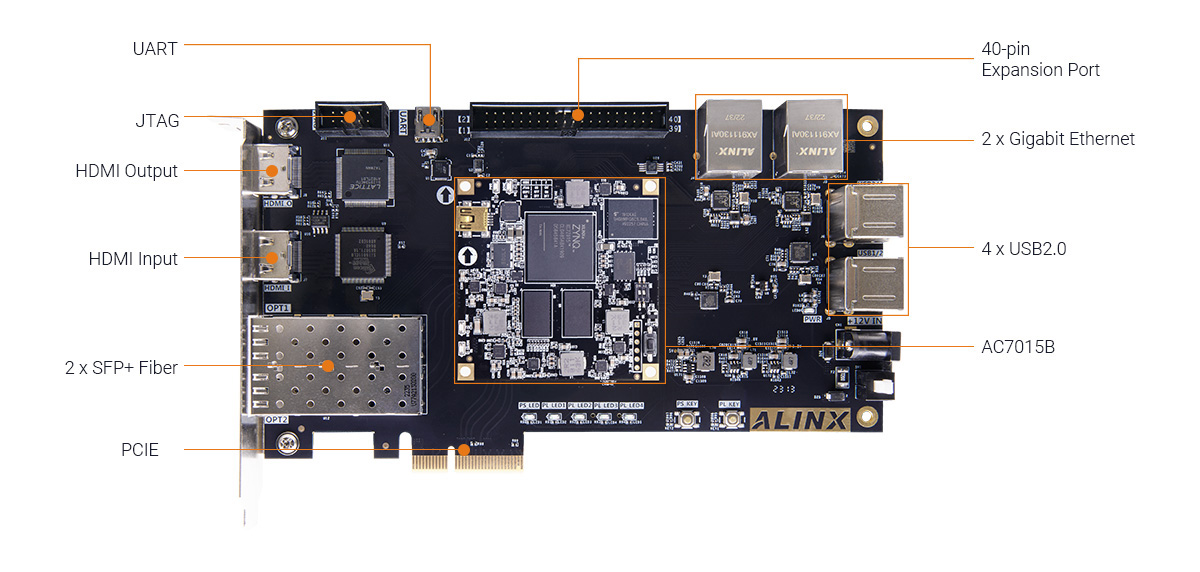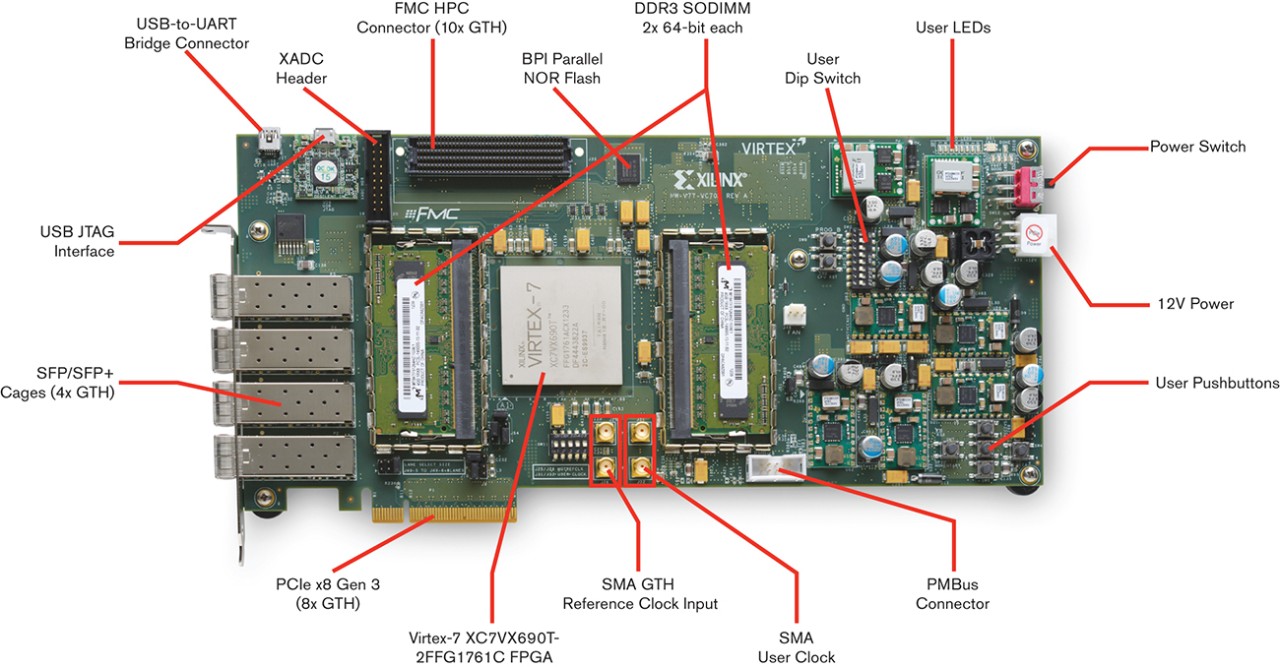
Xilinx FPGA Development Boards: Features, Applications & Beginner’s Guide
Global electronic component supplier AMPHEO PTY LTD: Rich inventory for one-stop shopping. Inquire easily, and receive fast, customized solutions and quotes.
| Number | Subheading |
|---|---|
| 1 | Introduction to Xilinx FPGA Development Boards |
| 1.1 | Overview of FPGA Development Boards |
| 1.2 | Importance of Development Boards in FPGA Design |
| 2 | Key Features of Xilinx FPGA Development Boards |
| 2.1 | Hardware Specifications |
| 2.2 | Software Support and Development Tools |
| 3 | Popular Xilinx FPGA Development Boards |
| 3.1 | Zynq-7000 Series |
| 3.2 | Virtex Series |
| 3.3 | Artix-7 Series |
| 4 | Getting Started with Xilinx FPGA Development Boards |
| 4.1 | Setting Up Your Development Environment |
| 4.2 | Programming Languages Supported |
| 5 | Designing Projects with Xilinx FPGA Boards |
| 5.1 | Example Projects and Tutorials |
| 5.2 | Debugging and Testing Techniques |
| 6 | Applications of Xilinx FPGA Development Boards |
| 6.1 | Telecommunications and Networking |
| 6.2 | Automotive and Industrial Automation |
| 6.3 | Consumer Electronics and IoT |
| 7 | Advantages of Using Xilinx FPGA Development Boards |
| 7.1 | Cost-Effectiveness and Rapid Prototyping |
| 7.2 | Community Support and Resources |
| 8 | Challenges and Limitations |
| 8.1 | Complexity of FPGA Development |
| 8.2 | Resource Constraints |
| 9 | Future Trends in FPGA Development Boards |
| 9.1 | Integration with AI and Machine Learning |
| 9.2 | Enhanced Connectivity and Performance |
| 10 | Conclusion |
| 10.1 | Summary of Key Points |
| 10.2 | Final Thoughts on Xilinx FPGA Development Boards |
| 11 | Frequently Asked Questions |
| 11.1 | What is the purpose of an FPGA development board? |
| 11.2 | How to choose the right Xilinx development board? |
| 11.3 | What programming languages can I use? |
| 11.4 | Can I use Xilinx boards for AI applications? |
| 11.5 | What are some common projects for beginners? |
| 11.6 | Where can I find resources for learning? |
Introduction to Xilinx FPGA Development Boards
Overview of FPGA Development Boards
Xilinx FPGA development boards are vital resources for engineers and developers engaging with field-programmable gate arrays (FPGAs). These boards serve as versatile platforms for prototyping, testing, and developing digital designs, leveraging the advanced capabilities of Xilinx FPGAs. Each board typically includes various peripherals, allowing users to experiment with different applications and configurations.
Importance of Development Boards in FPGA Design
Development boards significantly streamline the FPGA design process by offering pre-configured hardware components such as power supplies, I/O interfaces, and connectors. This pre-assembled setup enables users to concentrate on software development and system integration rather than hardware setup, thereby accelerating the overall development lifecycle. By providing a robust environment for experimentation and iteration, these boards are instrumental in reducing time to market and enhancing design efficiency.
Key Features of Xilinx FPGA Development Boards
Hardware Specifications
Xilinx FPGA development boards feature a range of specifications tailored to various applications, including:
- FPGA Type: Each board is equipped with a specific Xilinx FPGA model, such as Zynq or Virtex, providing different levels of performance and functionality based on project requirements.
- Memory Options: Boards typically include DDR RAM and flash memory to support data storage and application execution, essential for handling complex designs and large datasets.
- I/O Interfaces: A variety of connectivity options, including USB, Ethernet, GPIO, and other interfaces, are provided to facilitate interaction with external devices, sensors, and other systems.
Software Support and Development Tools
Xilinx offers a comprehensive suite of development tools designed to enhance the design process. The Vivado Design Suite and SDK are key components that support multiple programming languages, such as VHDL, Verilog, and C/C++. These tools empower users to:
- Design: Create digital systems using graphical or textual design methodologies.
- Simulate: Test designs through simulation before hardware implementation to ensure functionality and performance.
- Implement: Efficiently synthesize and deploy designs to the FPGA, enabling rapid prototyping and iteration.
Popular Xilinx FPGA Development Boards
Zynq-7000 Series
The Zynq-7000 series combines an ARM processor with an FPGA, allowing for powerful processing capabilities alongside programmable logic. Ideal for applications requiring high performance and flexibility, such as embedded systems and IoT devices.

Virtex Series
Virtex boards are designed for high-performance applications, featuring advanced processing capabilities and extensive I/O options. They are commonly used in telecommunications and data center applications where speed and reliability are crucial.

Artix-7 Series
Focused on cost-effectiveness and low power consumption, Artix-7 development boards are suitable for applications in consumer electronics and portable devices. They offer a good balance between performance and power efficiency.
Xilinx FPGA Development Boards: Features, Applications & Beginner’s Guide
Getting Started with Xilinx FPGA Development Boards
Setting Up Your Development Environment
To begin using a Xilinx FPGA development board, install the Vivado Design Suite on your computer. This software provides the necessary tools for design entry, simulation, synthesis, and implementation. Follow the manufacturer's guidelines to connect the board and install any required drivers.
Programming Languages Supported
Xilinx boards support various programming languages, including:
- VHDL: A hardware description language for defining the behavior of digital circuits.
- Verilog: Another hardware description language, favored for its concise syntax.
- C/C++: Used for software programming on ARM processors in Zynq boards.
Designing Projects with Xilinx FPGA Boards
Example Projects and Tutorials
Several online resources and tutorials can help beginners get started with Xilinx FPGA boards. Common project ideas include:
- LED Blinking: A simple introductory project to familiarize users with the development environment.
- Digital Signal Processing: Implementing filters or modems for signal analysis and manipulation.
- Image Processing: Developing systems for image recognition or processing using cameras.
Debugging and Testing Techniques
Effective debugging is crucial in FPGA development. Utilize built-in debugging tools provided in the Vivado suite, such as Integrated Logic Analyzer (ILA) and Signal Tap, to monitor signals and verify the correct operation of your design.
Applications of Xilinx FPGA Development Boards
Telecommunications and Networking
Xilinx FPGAs are widely used in telecommunications for applications like network processing, wireless communication, and data routing, where high-speed data handling is essential.
Automotive and Industrial Automation
FPGAs play a vital role in automotive systems, providing functionalities for advanced driver assistance systems (ADAS) and real-time processing in industrial automation, enhancing efficiency and safety.
Consumer Electronics and IoT
With the rise of smart devices, Xilinx FPGA development boards are increasingly used in consumer electronics and IoT applications, enabling innovative solutions that require adaptability and performance.
Advantages of Using Xilinx FPGA Development Boards
Cost-Effectiveness and Rapid Prototyping
Using Xilinx development boards can reduce costs and time associated with hardware design. Rapid prototyping allows for quicker iterations, facilitating faster product development and market entry.
Community Support and Resources
Xilinx boasts a large community of developers and engineers who share knowledge, tutorials, and project ideas. Access to forums, online courses, and documentation enhances the learning experience for newcomers.
Challenges and Limitations
Complexity of FPGA Development
Despite their advantages, FPGA development can be complex, requiring a strong understanding of digital design principles and the tools involved. Users may need to invest time in learning the intricacies of FPGA architecture and programming.
Resource Constraints
Xilinx development boards, particularly lower-cost models, may have limited resources (e.g., logic cells, memory) that can constrain larger or more complex designs. Choosing the right board for your specific application is essential.
Future Trends in FPGA Development Boards
Integration with AI and Machine Learning
As AI applications grow, Xilinx FPGAs are increasingly being integrated with machine learning frameworks, enabling powerful processing capabilities for tasks like image recognition and natural language processing.
Enhanced Connectivity and Performance
Future Xilinx development boards are likely to feature improved connectivity options (like 5G and advanced Ethernet) and enhanced performance specifications, further expanding their applicability across various industries.
Conclusion
Summary of Key Points
Xilinx FPGA development boards are powerful tools that offer flexibility, performance, and a supportive ecosystem for engineers and developers. They enable rapid prototyping and are suitable for a wide range of applications.
Final Thoughts on Xilinx FPGA Development Boards
With their growing role in technology, understanding and utilizing Xilinx FPGA development boards will be crucial for anyone looking to innovate in digital design and processing.
Frequently Asked Questions
What is the purpose of an FPGA development board?
An FPGA development board allows engineers to prototype and develop digital designs using FPGAs, providing the necessary hardware and tools.
How to choose the right Xilinx development board?
Consider your project requirements, including processing power, I/O needs, and budget, when selecting a development board.
What programming languages can I use?
You can use VHDL, Verilog, and C/C++ with Xilinx development boards, depending on your design needs.
Can I use Xilinx boards for AI applications?
Yes, Xilinx FPGAs are increasingly used in AI applications due to their processing capabilities and flexibility.
What are some common projects for beginners?
Beginner projects include LED blinking, digital signal processing, and simple image processing tasks.
Where can I find resources for learning?
Explore online courses, Xilinx documentation, and community forums for tutorials and support in FPGA development.
